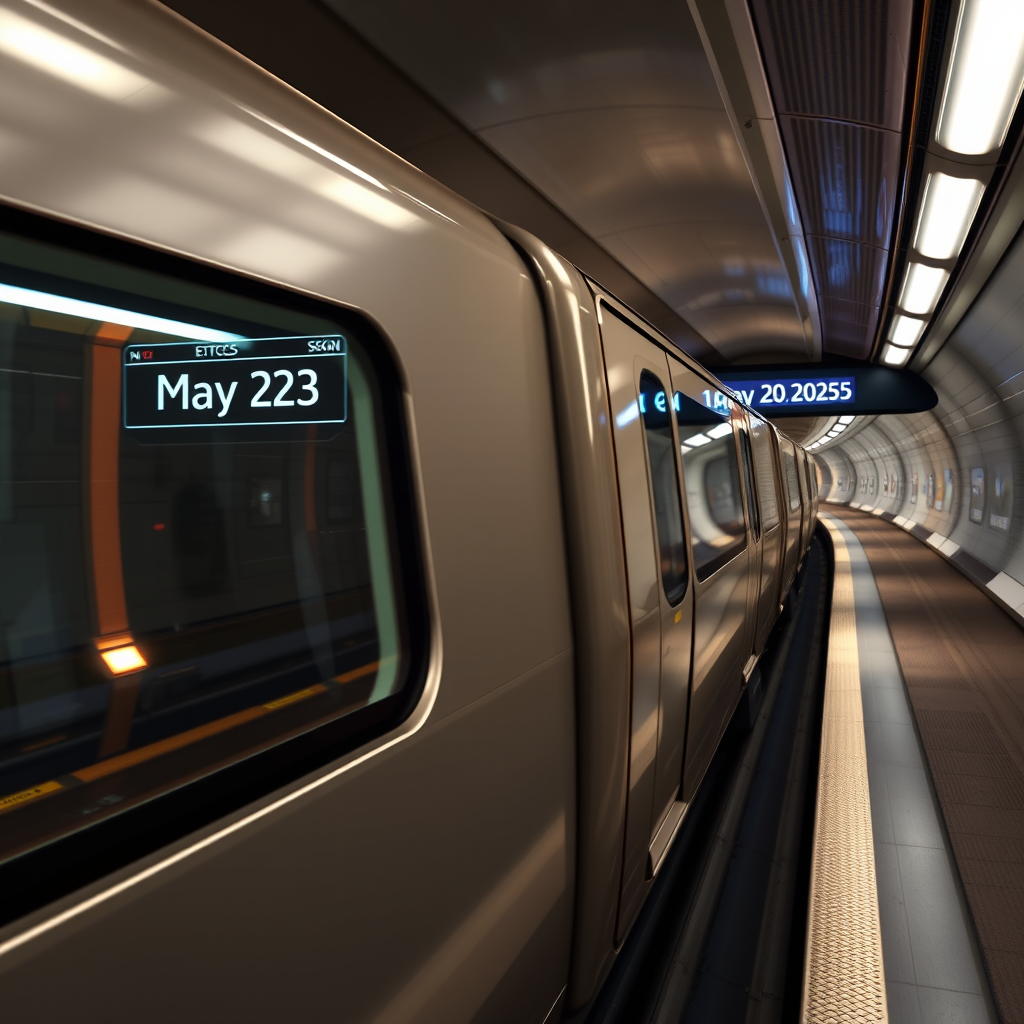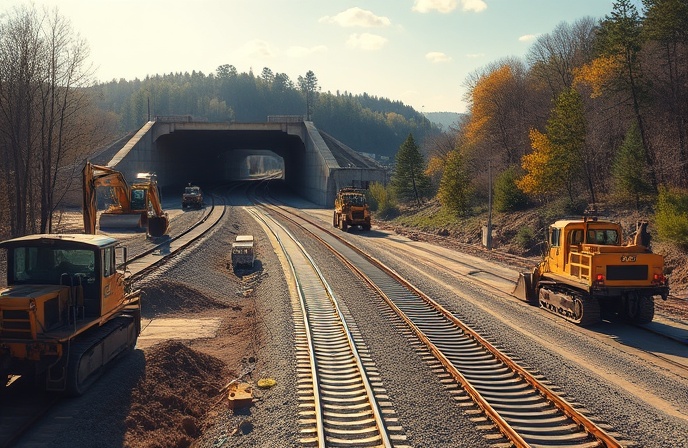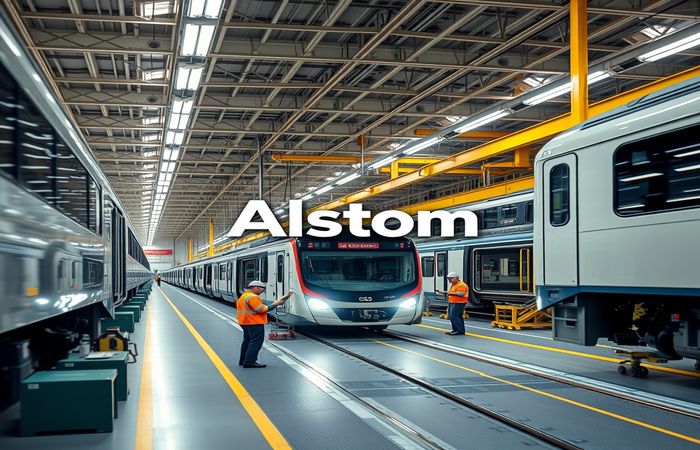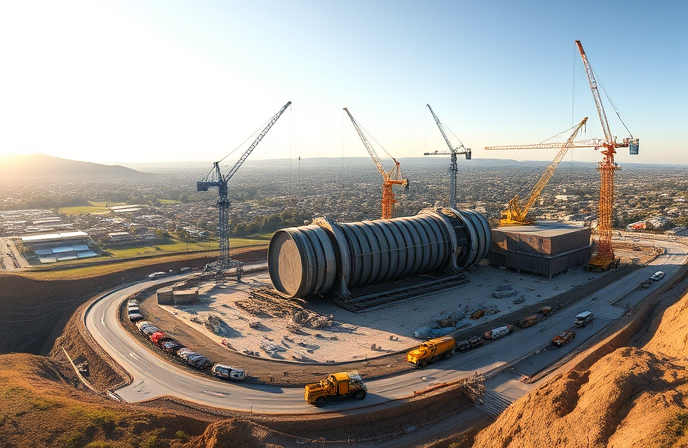UK Rail’s Digital Leap: Signal-Free Northern Line

UK’s Northern City Line Achieves Landmark: First Commuter Route to Operate with Signal-Free Digital System
United Kingdom – May 20, 2025
London’s historic Northern City Line (NCL) has made railway history in the United Kingdom, becoming the nation’s first commuter railway to operate exclusively under the European Train Control System (ETCS) Level 2, completely devoid of traditional trackside signals. This pioneering achievement, announced on May 20, 2025, marks a pivotal moment in the ambitious £1.4 billion ($1.86 billion) East Coast Digital Programme (ECDP). The ECDP aims to comprehensively modernise rail operations across key routes through the strategic deployment of advanced digital signalling and train control technologies. The successful transition on the NCL, a crucial link between Finsbury Park and Moorgate, not only signifies a technological leap for this specific line but also serves as a critical proving ground and a source of invaluable experience for the wider national rollout of digital signalling, promising a future of enhanced rail performance and passenger experience.
Northern City Line: Pioneering Signal-Free Operations
The Northern City Line (NCL), a 3.5-mile commuter route serving six stations primarily underground in London, has now fully transitioned to European Train Control System (ETCS) Level 2 operations without the backup of conventional lineside signals. This move replaces a signalling system that has served the line for 121 years. Drivers on the NCL now receive all movement authority and speed information directly via an in-cab computer display, a fundamental shift from relying on external visual cues from trackside signals. This ‘No SGN’ (No Signals) implementation represents a significant evolution in UK rail signalling practice, particularly on a high-frequency urban metro-style service. The successful decommissioning of the legacy signalling infrastructure is a testament to the meticulous planning and execution by Network Rail and its partners, setting a new benchmark for digital railway implementation in a complex operational environment.
Understanding ETCS and its In-Cab Revolution
The European Train Control System (ETCS) is a sophisticated digital signalling and train control system designed to enhance safety and interoperability across European railways. On the Northern City Line, the implementation is ETCS Level 2. In this configuration, train movement authority is transmitted wirelessly from a Radio Block Centre (RBC) directly to the train’s onboard European Vital Computer (EVC). This system continuously monitors the train’s speed and position, enforcing compliance with permitted speeds and stopping points. The elimination of physical trackside signals reduces the risk of signal sighting issues for drivers, especially in challenging environments like tunnels, and significantly decreases the maintenance burden associated with traditional signalling equipment. The in-cab display provides drivers with a clear, unambiguous indication of the line ahead, permitted speed, and target distances, leading to smoother train handling and optimised energy consumption. This technology is a cornerstone of the European Rail Traffic Management System (ERTMS), aiming for a unified railway control system across the continent.
A Stepping Stone in the East Coast Digital Programme (ECDP)
The Northern City Line’s migration to signal-free ETCS operation is a crucial component and a significant early success for the wider East Coast Digital Programme (ECDP). The £1.4 billion ($1.86 billion) ECDP is a transformative initiative aimed at modernising one of the UK’s busiest and most economically vital rail arteries, the East Coast Main Line (ECML). The ECML will be the first mainline railway in the UK to adopt ETCS Level 2 without traditional signals along its southern section. The NCL, while a shorter and more contained route, provides an invaluable real-world operational environment to test, refine, and validate the procedures and technologies for ‘No SGN’ working. Ed Akers, Network Rail ECDP industry partnership director, emphasized that the ‘learnings we have had from delivering a no-signals railway in the heart of London, are what will enable us to deliver a railway transformation on the East Coast Main Line and then nationally.‘ This highlights the NCL project’s role as a pathfinder, de-risking the more complex ECML deployment and providing a template for future national ETCS rollouts.
Collaboration, Benefits, and Future Outlook
The successful implementation on the Northern City Line underscores the critical importance of deep collaboration between infrastructure managers, train operators, and technology suppliers. Network Rail has worked closely with Siemens Mobility, who supplied both the ETCS trackside (RBC and interlocking) and onboard systems for the Class 717 trains operating on the line. Ben Lane, Siemens Mobility UK&I ECDP project director and infrastructure lead, highlighted this synergy: ‘By integrating our ETCS solution with our Siemens Mobility Class 717 trains, we can see how important it is to bring track and train together.‘
The anticipated benefits of this digital transition are manifold:
- Enhanced Reliability and Punctuality: Fewer failures associated with lineside signals and optimised train regulation.
- Increased Safety: Continuous speed supervision and reduced risk of human error related to signal misinterpretation.
- Reduced Maintenance Costs: Elimination of physical trackside signals and their associated upkeep.
- Improved Environmental Performance: Smoother train operations can lead to reduced energy consumption, and less physical infrastructure means a smaller material footprint.
While ETCS is already operational on the Thameslink core section through central London, traditional signals remain in place there, operating alongside the new digital system. The NCL’s move to a purely digital, signal-free environment, building on the 2011 Cambrian line pilot, therefore marks a significant advancement. Further ECDP initiatives, such as digital signalling testing between Welwyn Garden City and Hitchin – set to become the first mainline section to utilise ETCS exclusively – will continue to build on this momentum. This follows earlier successful ETCS Level 2 tests on sections of the East Coast Main Line (ECML) itself, such as those completed in August 2024, which form part of the phased approach of the ECDP, systematically de-risking and validating the technology ahead of full-scale deployment.
Conclusions
The Northern City Line’s successful transition to a completely signal-free operational environment, reliant solely on the European Train Control System (ETCS) Level 2, represents a watershed moment for the UK rail industry. This achievement, realized on May 20, 2025, is far more than a localized upgrade; it is a powerful demonstration of the viability and benefits of cutting-edge digital signalling technology within a high-density urban commuter context. As a key milestone within the ambitious £1.4 billion ($1.86 billion) East Coast Digital Programme (ECDP), the NCL project provides critical operational insights and a blueprint for the larger-scale transformation of the East Coast Main Line (ECML) and, eventually, the national rail network.
The move away from 121-year-old conventional signalling to an in-cab system underscores a paradigm shift towards enhanced safety through continuous train supervision, improved reliability by reducing trackside equipment failures, and greater operational efficiency. The collaboration between Network Rail, Siemens Mobility, and other industry partners has been pivotal, showcasing the necessity of an integrated ‘track and train’ approach for such complex technological deployments. The anticipated reductions in maintenance, coupled with smoother journeys and potential environmental benefits, paint a compelling picture for the future of rail travel. While challenges remain in scaling this technology across more extensive and varied routes, the NCL’s pioneering step significantly de-risks future phases of the ECDP and bolsters confidence in the UK’s capacity to modernise its railway infrastructure for the 21st century and beyond. This is a significant stride towards a more resilient, efficient, and passenger-focused railway.
Company Information:
- Network Rail: The owner and infrastructure manager of most of the railway network in Great Britain. Network Rail is responsible for maintaining and developing the rail infrastructure, including tracks, signals, tunnels, bridges, and stations.
- Siemens Mobility: A leading global provider of transport solutions. For this project, Siemens Mobility supplied the ETCS Level 2 signalling technology for both trackside and onboard systems, including integration with their Class 717 trains operating on the Northern City Line.





